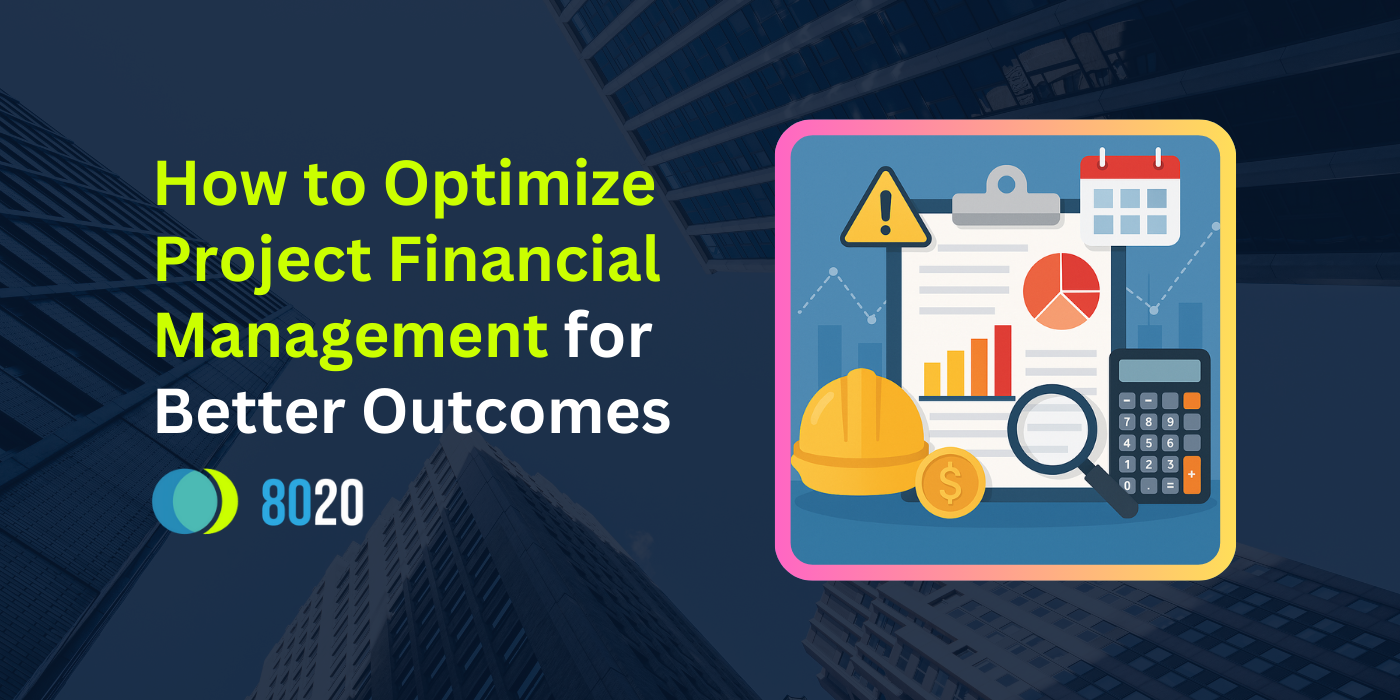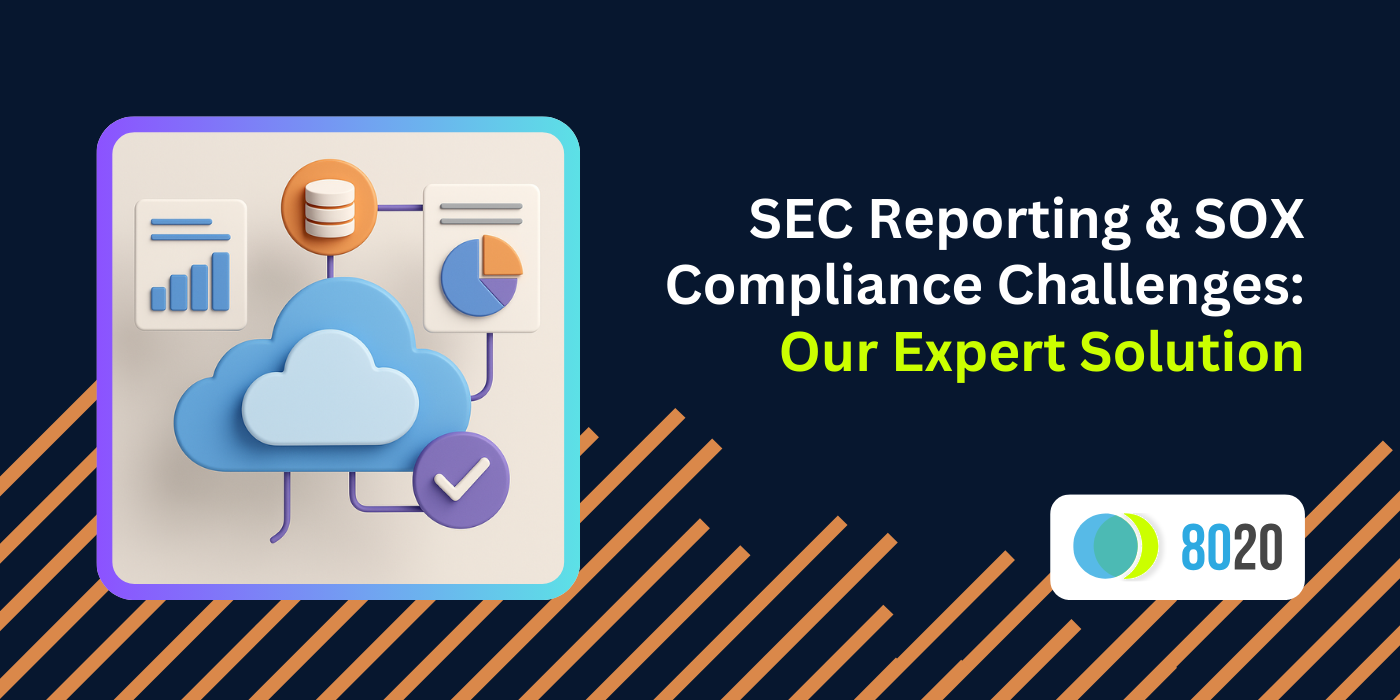Interim Financial Project Management
Turn Complex Financial Projects Into Controlled Wins
Our consultants bring structure, speed, and clarity to your most critical financial initiatives. From ERP rollouts and system upgrades to close acceleration and carve-outs, we provide financial project management that aligns stakeholders, controls risk, and delivers results.
TRUSTED BY INDUSTRY LEADERS






Driving Strategic Outcomes Through Financial Project Leadership
We manage complex, cross-functional financial initiatives with precision. From high-stakes transitions to process overhauls, our consultants embed with your team to lead planning, execution, and post-project optimization, which ensures projects meet business goals, timelines, and compliance requirements.
20+Years
Avg. Operator Experience
100+
Full-Time Consultants
12+
Years in Business
1,600+
Projects Completed

How Is 8020 Different How Do Our Financial Project Management Services Differ?
We don’t just manage timelines, we manage impact. Our consultants combine deep finance expertise with proven project leadership to ensure initiatives deliver lasting value, not just check boxes.
Why Companies Trust 8020:
• Consultants with Big-4 and F500 finance leadership experience
• Clear project frameworks tailored to finance-specific challenges
• Expertise in ERP transitions, process redesign, M&A, and close acceleration
What Our Interim Finance Services Deliver:
• On-time, on-budget execution with minimal disruption
• Alignment across stakeholders, departments, and leadership
• Post-project documentation, training, and process sustainability
Financial Project Management Benefits
We create clear, detailed project plans rooted in financial priorities, which alignes systems, people, and processes from day one.
01
Strategic Planning for Financial Initiatives
We build tailored project plans that align with your financial objectives—whether you're implementing new systems, accelerating close cycles, or managing a carve-out. Every step is designed to support measurable business outcomes.
02
Expert-Led Project Execution
Our consultants lead complex financial projects from kickoff to completion. With backgrounds in FP&A, accounting, and systems, we ensure on-time, on-budget delivery without operational disruption.
03
Risk Reduction and Compliance Focus
From internal controls to audit readiness, we identify risks early and build safeguards into every phase of your financial transformation project, ensuring stakeholder confidence and regulatory alignment.
04
Sustainable Knowledge Transfer
We don’t just deliver projects, we leave your team stronger. Expect clear SOPs, hands-on training, and scalable processes that support lasting value long after the project closes.
Related Financial Consulting Services
The 8020 Consulting team has deep expertise in many different Financial Management Services. Read more about some of our services:
We Operate Differently | We’re Built On Successful Outcomes, Not Just Theory
Our proven consulting model sets us apart from the market. Our core operating directives below make us different, better.

"8020 was crucial for RealD in developing a financial model for technology IP monetization and guiding our ERP selection process. Their work is thorough, executive-ready, and their team effectively implements recommendations."
⭐⭐⭐⭐⭐ | Jeff Spain | CFO, ReaID

"8020 was key in overhauling our budgeting process at 72andSunny and provided crucial support for system implementations like Workday and Oracle."
⭐⭐⭐⭐⭐ | Jordan Toplitsky | CFO, 72andSunny

"The team at 8020 have supported me across three companies, including managing our NetSuite implementation at Edgecast, integrating billing systems post-acquisition by Verizon, and overseeing our HQ relocation."
⭐⭐⭐⭐⭐ | John Powers | CFO, Tithe.ly

"8020's consultant brought a proactive approach to every challenge, consistently exceeding expectations while strengthening our team dynamic. I highly recommend 8020 for their skilled professionals who deliver immediate value and elevate any team."
⭐⭐⭐⭐⭐ | Lindsay Terifay | VP, Controller - Fandango & NBC Sports
Meet Some of Our Experts
All the right skills, real-world experience, & high EQ leadership to ensure your success.
Financial Project Management Resources
Essential Tools and Guides to Optimize Your Financial Operations.

Cross-Functional Project Management (Infographic)
Our helpful infographic offers four success factors for any cross-functional project

ERP Implementation Stages & Phases Guide
Learn about the stages, phases, & key ERP implementation players with our comprehensive guide

Operational Review Process Guide
Get our 5-step action plan for building a successful operational review process and program to maintain traction on enterprise initiatives

Our Promise
The 8020 Commitment
We’re committed to delivering meaningful impact, fast.
Our consultants bring the expertise and focus to create measurable value from day one. And if expectations aren’t met, we don’t stand still, we collaborate, adjust, and ensure we deliver on the value we promised.
Financial Project Management FAQs
Answers to your most frequently asked questions.
How is 8020's Consulting model different from other firms?
Unlike traditional firms that rely on junior teams or contractors, we embed highly experienced operators directly onto your team.
Our consultants are chosen from the top 10% of the market and are our full-time employees who combine deep technical expertise with hands-on operational experience, averaging 20+ years in the field.
This means you get the perfectly chosen expert for your specific needs, who operates as an extension of your team, drives immediate results, and elevates your entire finance operation through their proven methodologies and industry knowledge.
What makes your consultants different from other firms' consultants?
We exclusively hire senior finance professionals who have both led and executed complex financial operations in many real-world scenarios.
Each consultant must demonstrate exceptional technical expertise, strategic thinking, and a proven track record of success across challenging business environments.
Our consultants have actually "sat in the seat" - meaning they've held senior finance positions and truly understand the day-to-day challenges of running finance operations. This combination of technical knowledge and practical experience matched to your specific challenges enables them to deliver superior results.
How do you match consultants to specific client needs?
Our leadership & Client Services teams are made up of experienced finance and accounting consultants themselves, so they actually viscerally understand what your challenges are and who's best suited on our team to solve them.
We also use a precise diagnostic approach to match the right expert to your specific challenges by carefully evaluating project requirements, industry context, and technical needs to deploy consultants with directly relevant experience.
Our very selective hiring process maintains a diverse pool of specialists across many finance disciplines, ensuring we can address any financial challenge with the exact expertise needed. While out on a project, each of our consultants can leverage the collective knowledge & experience of all ~100 experts on the team whenever needed.
This strategic matching process, refined over years of successful engagements, maximizes project success and client satisfaction.
What should we expect from a Financial Project Manager?
A Financial Project Manager provides structure, coordination, and oversight across financial initiatives.
Key responsibilities include managing multiple workstreams, implementing reporting systems, ensuring governance, and maintaining flexibility to adapt as projects evolve.
The role focuses on delivering results while aligning stakeholders.
How do I know if my business needs Financial Project Management?
A business may need Financial Project Management when facing cross-functional initiatives, system implementations, compliance efforts, or bandwidth limitations.
Financial Project Managers provide the structure, coordination, and expertise required to execute complex projects effectively.
What industries does 8020 Consulting typically help with financial project management?
While we've successfully delivered projects across many sectors, we frequently work with technology, healthcare, manufacturing, retail, and media & entertainment companies.
Our experience spans PE-owned, public, and private companies, though we adapt our approach to organizations of various sizes and structures.
What is the typical contract length of a Financial Project Manager?
Financial Project Manager contracts typically range from 3 to 12 months, depending on the project’s complexity and scope.
Engagements are structured around milestones and business needs rather than fixed timelines.
Do your Financial Project Managers work on an interim basis?
Yes, Financial Project Managers are available on an interim basis.
Common scenarios include covering staffing gaps, supporting specific initiatives, or supplementing teams during high-demand periods.
Consultants integrate into existing teams to meet project goals efficiently.
What happens at the end of the Financial Project Management contract?
At the end of a Financial Project Management engagement, the focus shifts to smooth transition, knowledge transfer, and clear documentation.
The goal is to ensure teams are equipped to sustain progress and maintain project outcomes independently.
Additional Deep Learning
Read any of the related articles below to level up your learning today.
Your Corporate Finance & Accounting Challenges ...Solved
Leverage the industry’s most skilled accounting & finance consultants to help you solve any challenge
- Instantly fill your gaps & drive performance
- Extend your team with INsourced experts
- Optimize accounting infrastructure & efficiency
- Save money & get projects done right and on time



.png?width=1200&length=1200&name=Front%20-%20Chona%20Chua%20(5-14).png)



